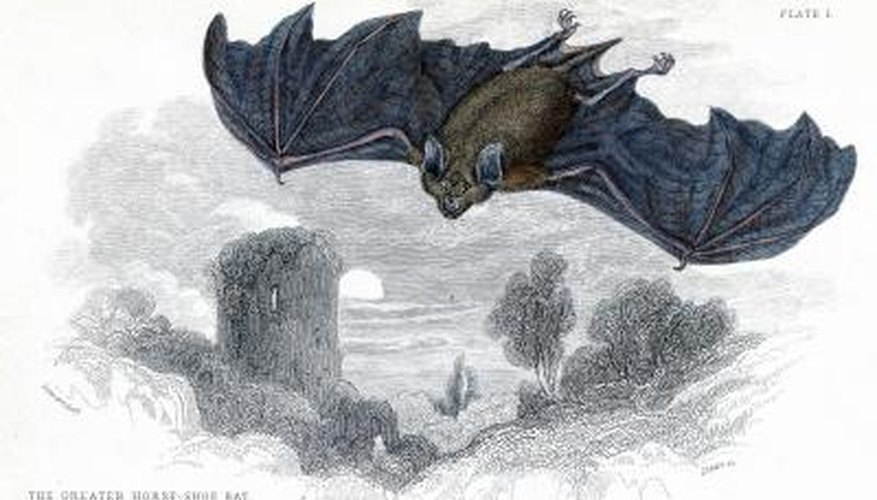Although bats are mammals and have many common mammalian features such as being warm-blooded and having fur, the main adaptation that separates them from other mammals is their ability to fly. Bats also have other physical and behavioural adaptations that allow them to survive in a range of environments and on a variety of diets.
Wings and Flight
Bats are the only mammals that are able to fly. Adaptations that enable them to fly effectively include long arms with bones that are thin and light but are also capable of supporting and manipulating the wing membranes. Bat flight is also aided by fused bones in areas such as the skull. This helps to make the bat light in weight. Although these wings are mainly used for flight, they also have other uses such as forming pouches to carry or catch prey with.
- Bats are the only mammals that are able to fly.
- Bat flight is also aided by fused bones in areas such as the skull.
Feeding
Different species of bats have adapted to feed on a wide range of food sources. Although most bats feed on insects, the diets of some bats include fruit, flowers, blood, frogs, birds and fish. Different species have different adaptations to help them hunt or gather their specific sources of food. For example, fish-eating bats such as the fishing bulldog bat have large feet and hooked claws for catching fish.
- Different species of bats have adapted to feed on a wide range of food sources.
- Different species have different adaptations to help them hunt or gather their specific sources of food.
Sleeping
Bats are nocturnal animals. They sleep during the day in shelters such as caves or empty buildings. This enables them to hide from predators while they are asleep and vulnerable. Bats sleep upside down, holding on with their feet rather than their hands. This leaves their wings free to take off in flight whenever they need to. Bats leave their shelters to hunt at night. As many species of bats rely on hearing to navigate and hunt their prey, daylight is not essential. Flying at night also prevents bats' wings from absorbing excessive amounts of heat. Bats are able to hibernate through the winter. This is a useful adaptation that enables them to live in a variety of climates, surviving through cold temperatures and limited food supplies in winter. When bats go into hibernation, they reduce their body temperature which enables them to conserve energy and find a relatively warm, humid shelter.
- Bats are nocturnal animals.
- When bats go into hibernation, they reduce their body temperature which enables them to conserve energy and find a relatively warm, humid shelter.
Echolocation
Although fruit bats rely largely on sight in order to find their way around, the majority of bats use hearing to navigate and hunt for food. The adaptation that allows bats to hunt and navigate effectively at night is called echolocation. While hunting insects at night, bats produce a series of high-pitched shrieks from their noses or mouths that most humans are unable to hear. These sounds bounce back when they meet an object such as an insect, letting the bat know where it is.
- Although fruit bats rely largely on sight in order to find their way around, the majority of bats use hearing to navigate and hunt for food.
